Dyspnea (Breathlessness)
- Dyspnea, or shortness of breath, is the feeling that you can not get enough air into your lungs. It might feel like your chest is tight, you are gasping for air or you are working harder to breathe. Heart and lung conditions are the usual causes of dyspnea.
Table of Contents
What is dyspnea (shortness of breath)?
- Dyspnea (pronounced “DISP-nee-uh”) is the word healthcare providers (doctors) use for feeling short of breath. You might describe it as not being able to require enough air (“air hunger”), chest tightness, or working harder to breathe.
- Shortness of breath is sometimes a symptom of heart and lung problems. But it can also be a sign of other conditions such as asthma, allergies, or anxiety. Intense exercise or having a cold can make you feel breathless.
What are paroxysmal nocturnal dyspnea (PND) and sighing of dyspnea?
- Paroxysmal nocturnal dyspnea (PND) is a feeling like you can not breathe an hour or two after falling asleep. Sighing dyspnea is when you sigh a lot later taking deep breaths in to try to relieve the feeling of dyspnea.
What is the contrast between dyspnea and shortness of breath?
- Dyspnea and shortness of breath are similar. Dyspnea is the medical term for the feeling of not being able to require enough air.
What is acute and chronic dyspnea?
- Acute and chronic dyspnea vary in how quickly they start and how long they last. They have various causes.
Acute dyspnea
- Acute dyspnea can come on quickly and does not last very long (hours to days). Allergies, anxiety, exercise, & illness (like the usual cold or the flu) can cause acute dyspnea. More serious conditions, such as a heart attack, sudden airway narrowing (anaphylaxis), or blood clots (pulmonary embolism) can also cause acute dyspnea.
Chronic dyspnea
- Chronic dyspnea is shortness of breath that lasts a long time (several weeks or longer) or retains coming back. Ongoing health conditions such as asthma, heart failure, and COPD can cause chronic dyspnea. Not getting enough exercise can make you feel breathless all the time because your muscles are trying to get more oxygen.
Who gets dyspnea?
As it has so many causes, shortness of breath is very usual. But you might be more likely to get short of breath if you do not get enough exercise or have:
- Anemia (low level of red blood cells)
- Anxiety
- Heart, lung, or breathing problems
- A history of smoking
- A respiratory infection
- BMI (Body mass index) is more than 30 (obesity).
What are the signs of dyspnea?
- Shortness of breath can feel various from person to person and depending on what is causing it. Sometimes, it comes with another symptom.
Some signs of dyspnea involve:
- Chest tightness
- Feeling like you require to force yourself to breathe deeply
- Working hard to require deep breaths
- Rapid breathing (tachypnea) or heart rate (palpitations)
- Wheezing or stridor (noisy breathing).
What causes shortness of breath (dyspnea)?
- Exercise, illness, and health conditions can cause shortness of breath (dyspnea). The most usual causes of dyspnea are heart and lung conditions.
How do heart and lung conditions cause shortness of breath (dyspnea)?
- Your heart and lungs work together to bring oxygen to your blood and tissues and remove carbon dioxide (CO2). If one or the other is not working right, you can end up with too little oxygen or too much carbon dioxide in your blood.
- When this occurs, your body tells you to breathe harder to get more oxygen in or carbon dioxide out. Anything that creates your body needs more oxygen — such as a good workout or being at high altitudes — can also make this happen.
- Your brain can also get the message that your lungs are not working right. This might make you feel like you are working harder to breathe or give you a feeling of tightness in your chest.
Causes for this involve:
- Irritation in your lungs
- Restriction in the way your lungs motion when you breathe
- Resistance in air moving into your lungs (from blocked or narrow airways).
What health conditions cause shortness of breath (dyspnea)?
- Heart or lung disease and other conditions can cause shortness of breath (dyspnea).
How do I know what is causing my shortness of breath?
- To try to figure out what is causing your dyspnea, your healthcare provider will perform a physical exam, involving listening to your lungs with a stethoscope and taking your blood pressure. They will put a sensor on your finger to see how much oxygen you have in your blood.
They may also do additional testing, involving:
- Chest X-ray, CT scans, or another special imaging test. Your provider can use pictures of the inside of your chest to know if there is an issue with your lungs.
- Blood tests: Your provider can use blood tests to see for anemia or illnesses.
- Lung function tests: Tests that indicate how well you are breathing.
- Cardiopulmonary exercise testing. Your provider will have you utilize a treadmill or stationary bike for this test. The tests can tell your provider (doctor) the amount of oxygen you take in and the carbon dioxide you let out during exercise.
How is shortness of breath (dyspnea) treated?
- How you treat shortness of breath depends on what is causing it. If you have an underlying medical condition, you will need to address it for your symptoms to improve.
Treatments that can improve your breathing involve:
- Exercise: Exercise can strengthen your heart and lungs so you do not have to work as hard.
- Relaxation techniques: Your provider (doctor) can give you relaxation techniques and breathing exercises to practice. These can assist with dyspnea from underlying breathing conditions, as well as anxiety.
- Medication. Inhaled drugs known as bronchodilators can relax your airways and are prescribed for asthma and COPD. Medication to relieve pain or anxiety can assist with breathlessness.
- Oxygen therapy: Your healthcare provider (doctor) will prescribe extra oxygen if your blood oxygen level is too low. It is delivered through a mask or tube in your nose.
Home treatments
Here are nine home treatments you can use to alleviate your shortness of breath (dyspnea):
Pursed-lip breathing
- This is a simple way to control shortness of breath (dyspnea) due to panic, COPD, or hyperventilation. It assists quickly slowing your pace of breathing, which makes each breath deeper and more effective. If you are very short of breath after exercising, you should seek medical help.
- Pursed breathing assists empty rusted Source the lungs of dead space air that occurs in COPD. It also assists release air trapped air from your lungs. You can use it any time you are experiencing shortness of breath, especially during the difficult part of an activity, such as bending, lifting objects, or climbing stairs.
To perform pursed lip breathing:
- Release your neck and shoulder muscles.
- Slowly breathe in through your nose for 2 counts, keeping your mouth closed.
- Purse your lips as if you are about to whistle.
- Breathe out slowly and gently through your pursed lips to the count of 4.
Sitting forward
- Resting while sitting can assist relax your body and make breathing easier.
- Rest sit in a chair with your feet flat on the floor, leaning your chest slightly forward.
- Gently rest your elbows on your knees or grasp your chin with your hands. Remember to retain your neck and shoulder muscles relaxed.
- This position is a form of “tripod stance,” which aims to make more space in the chest cavity for the lungs. It is assisted if you have COPD, and you may find you do it without thinking about it. It is not suitable for people with great levels of obesity.
Sitting forward supported by a table
- If you have both a chair and table to utilize, you may find this to be a slightly more comfortable sitting position in which to catch your breath.
- Rest sit in a chair with your feet flat on the floor, facing a table.
- Lean your chest slightly forward and relax your arms on the table.
- Relax your head on your forearms or on a pillow.
- This position is another form of tripod breathing, which makes more space for the lungs in the chest.
Standing with a supported back
- Standing can also assist relax your body and airways.
- Stand near a wall, facing away, and relax your hips on the wall.
- Retain your feet shoulder-width apart and relax your hands on your thighs.
- With your shoulders rested, lean slightly forward, and dangle your arms in front of you.
- As with other forms of tripod breathing mentioned above, this position creates more space in the chest for your lungs.
Standing with supported arms
- Stand near a table or other flat, sturdy piece of furniture that is just below the height of your shoulder.
- Relax your elbows or hands on the piece of furniture, keeping your neck relaxed.
- Relax your head on your forearms and relax your shoulders.
- In the classic “tripod” position, you can do this by placing a cane on the floor anterior of you and leaning on it with both hands.
Sleeping in a relaxed position
- People with rest apnea experience shortness of breath (dyspnea) while they sleep. This can lead to waking up often, which can diminish the quality and duration of your sleep.
- Try lying on your side with a pillow between your legs and your head increased by pillows, retaining your back straight. Or lie on your back with your head increased, and your knees bent, with a pillow under your knees.
- Both of these positions assist your body and airways relax, making breathing easier. Having your doctor assess you for sleep apnea and utilize a CPAP machine is recommended.
Diaphragmatic breathing
- Diaphragmatic breathing can also assist manage shortness of breath.
To try this breathing style:
- Rest sit in a chair with bent knees and relaxed shoulders, head, and neck.
- Place your hand on your belly.
- Breathe steadily through your nose. You should sense your belly moving under your hand.
- As you exhale, tighten your muscles. You should sense your belly fall inward. Breathing out (exhale) through your mouth with pursed lips.
- Put more emphasis on the (breath out) exhale than the (breath in) inhale. Retain exhaling for longer than usual previous slowly inhaling again.
- Repeat for about five minutes.
- A 2019 study found that combining these breathing strategies assisted expand chest volume in a group of people with COPD and reduced the number of breaths they required to take.
Using a fan
- Different experts recommend using a fan to blow cool air and help relieve shortness of breath, and some older research supports this. Pointing a small handheld fan toward your face may assist your symptoms.
- Findings published in 2018 found using a fan assisted people who had difficulty breathing due to late-stage cancer.
Drinking coffee
- An early study trusted Source indicated that caffeine rests the muscles in the airways of people with asthma, which could help improve lung function for up to four hours. It does this by blockingTrusted Source the receptors of some chemicals that contribute to shortness of breath.
- Yet ask your doctor before increasing your caffeine intake. Because of its stimulant effects, consuming too much caffeine may have trusted Source a negative impact on your health, especially if you have heart disease.
Lifestyle changes to treat shortness of breath
- There are many possible causes of shortness of breath, certain of which are serious and require emergency medical care. If you know why you have harmful breathing and the symptoms are mild, you can take steps to relieve it at home.
Lifestyle changes you can make to help keep shortness of breath at bay involve:
- quitting smoking and keeping away tobacco smoke
- keeping away exposure to pollutants, allergens, and environmental toxins
- managing body weight
- avoiding exertion at great elevations
- staying healthy through dietary choices, exercise, and requiring enough sleep
- seeing a doctor for any underlying medical issues
- getting vaccinations to cure flu, COVID-19, and other diseases
- following the recommended treatment plan for any underlying illness such as asthma, COPD, or bronchitis
- learning as much as you can about breathlessness, why it is affecting you, and what your options are,
- Remember, only a doctor can properly diagnose the cause of your shortness of breath.
Other treatments
- If you see a doctor about the shortness of breath, they will start by looking for any underlying health conditions that may be causing the problem. If they identify a specific cause, they will recommend suitable treatment.
Medications for shortness of breath
Medications for breathlessness involve:
- inhaled medications that assist open the airways
- drugs to treat specific conditions
- pills or liquids to assist reduce sputum and clear the lungs
- drugs to manage allergies
- treatment for a heart condition.
Pulmonary rehabilitation
- Certain people who have a lung condition advantage from a form of therapy known as pulmonary rehabilitation. A therapist will instruct you on ways to manage breathlessness. They can also advise on lifestyle choices such as boosting fitness levels and quitting smoking, if appropriate.
- Pulmonary rehabilitation can assist you to manage your breathing and may improve your overall well-being and quality of life.
Counseling
- Counseling such as cognitive-behavioral therapy (CBT) might be suitable for certain people with shortness of breath.
You might good from this approach if you:
- have a chronic lung disease (CLD) that is causing your stress or anxiety
- have depression alongside or because of other conditions
- have a panic or anxiety disorder
- wish to stop using tobacco yet are finding it hard.
- CBT (cognitive-behavioral therapy) can assist you to find new ways to face stressful situations. This type of therapy can assist address some of the factors that cause breathlessness or make it worse. Your doctor might approve it alongside pulmonary rehabilitation.
Oxygen
- People with severe breathing problems may require oxygen. Doctors can provide oxygen in the hospital, but certain people use it at home. Never utilize oxygen at home unless a doctor advises it, and always follow the commands when doing so.
Physiotherapy Management
- Dyspnoea is both acute and chronic with acute occurring under 3 weeks and chronic for more than 4 up to 8 weeks.
- “Acute dyspnoea usually is due to a more life-threatening process and needs rapid intervention.
- All patients should be placed on supplemental oxygen (O2), pulse oximetry, and a cardiac monitor.”
- Aerobic.
- walking.
- Cycling.
- Diaphragmatic breathing.
- Resistance exercise training.
- Many dyspnoeic people notice self posture which eases their breathing,
- Patients with a flat diaphragm may advantage of positions that use pressure from the abdominal contents to dome the muscle.
- The arms are best supported, to optimize accessory muscle function, yet without tension or active fixation
- Pursed Lip Breathing relieves dyspnoea and increases exercise tolerance, sustained improvement in exertional dyspnoea and physical function.
- Evidence from this review indicates that certain form of upper limb exercise training when compared to no upper limb training or a sham intervention improves dyspnoea.
Positions to facilitate efficient breathing in dyspnoeic people involve:
- “High side-lying.
- Sitting upright in a chair with supporting arms; for many patients, it is easier to breathe in this position than in bed. Some such as to lean back for support, while others prefer to lean slightly forward to put some stretch on the diaphragm
- Sitting leaning forward from the waist, arms resting on pillows on a table, feet on the floor
- Standing relaxed, leaning forwards with arms resting on a support such as a window sill.
- Standing relaxed, leaning back against a wall with legs slightly apart.
- Standing relaxed leaning sideways against a wall, arms in pockets if support is needed for the accessory muscles.
- Occasionally, lying flat is beneficial because of pressure from the abdominal contents against the diaphragm. Certain patients even find a slight head-down tip helpful.”
Outcome Measures
- Dyspnoea is a symptom, not an illness.
- The outcomes are highly variable depending on the exact etiology and patient demographics.
- Dyspnea Management Questionnaire (DMQ).
- Borg Rating Of Perceived Exertion.
Can dyspnea be cured?
- Most people experience shortness of breath occasionally. You can commonly treat what is causing dyspnea, but it may come back, especially if you have an underlying condition.
How can I prevent shortness of breath?
You can assist to cure shortness of breath by:
- Making a care plan with your provider (doctor) to manage any underlying conditions and sticking to them. This involves what kind of medications to take and when to take them, exercise plans, breathing treatments, and any other treatment recommended by your provider.
- Avoiding inhaling chemicals that can irritate your lungs, such as paint fumes and car exhaust.
- Practicing breathing exercises or relaxation techniques.
- Not smoking.
- Maintaining a weight that is healthy for you.
- Avoiding activity when it is very hot or very cold or when humidity is high. If you have lung disease, see air pollution (ozone) alerts (you can usually find them with the weather forecast). Avoid being outside when air pollution is great.
When should I see a healthcare provider?
- Contact a healthcare provider (doctor) if you have severe shortness of breath or if your breathlessness interferes with your everyday activities. Sometimes, shortness of breath is a sign of a medical emergency that needs immediate treatment.
- If you have a condition that makes you short of breath sometimes, ask a healthcare provider if there are additional treatments to assist you to breathe better.
Is dyspnea life-threatening?
- Dyspnea on its own usually is not dangerous, but sometimes, shortness of breath can be a sign of a life-threatening condition.
Go to the closest ER if you have:
- Sudden difficulty breathing
- Severe breathlessness (can not catch your breath)
- Breathlessness later 30 minutes of rest
- Blue skin, lips, or nails (cyanosis)
- Chest pain or heaviness
- Fast or irregular heartbeat (heart palpitations)
- High fever
- Stridor (high-pitched sound) or wheezing (whistling sound) when breathing
- Swollen ankles or feet.
NOTE
- When something “takes your breath away,” it is usually a good thing. Yet the scary feeling of dyspnea is the kind of breathtaking no one wants to experience. If you have sudden or serious shortness of breath, especially if you are also having other symptoms, such as nausea, chest pain, or blue skin, lips, or nails, go to the nearest ER.
- If you are living with shortness of breath on a regular basis due to an underlying condition, talk to your healthcare provider (doctor) about managing your symptoms. You might not be able to get rid of your symptoms completely, yet sometimes, even small changes can make a big difference in your quality of life.
FAQs
Common causes include:
asthma.
a chest infection.
being overweight.
smoking.
a panic attack.
Signs of Respiratory Distress
Breathing rate. An increase in the number of breaths per minute may mean that a person is having trouble breathing or not getting enough oxygen.
Color changes.
Grunting.
Nose flaring.
Retractions.
Sweating.
Wheezing.
Body position.
Seek emergency medical care if your shortness of breath is accompanied by chest pain, fainting, nausea, a bluish tinge to lips or nails, or a change in mental alertness — as these may be signs of a heart attack or pulmonary embolism.
Most cases of shortness of breath are due to heart or lung conditions. Your heart and lungs are involved in transporting oxygen to your tissues and removing carbon dioxide, and problems with either of these processes affect your breathing.
Shortness of breath is the most common symptom of heart failure. It is a distressing feeling that may cause you to feel smothered, Shortness of breath initially occurs with exertion but may get progressively worse and eventually occur at rest in severe cases.
People can experience shortness of breath while walking for a number of reasons. Sometimes, this occurs as a result of conditions such as anxiety, asthma, or obesity. Less commonly, shortness of breath signals a more serious underlying medical condition.
Breathing control
Put one hand on your chest and the other on your stomach.
Close your eyes to help you relax and focus on your breathing.
Slowly breathe in through your nose, with your mouth closed.
Breathe out through your nose.
Try to use as little effort as possible and make your breaths slow, relaxed, and smooth.
If you have breathlessness, you experience shortness of breath and difficulty breathing. The medical term is dyspnoea. It may come on suddenly (acute) or gradually over a period of time (chronic). The reason for breathlessness is that the body needs more oxygen than it is getting.
Stage 2 of Congestive Heart Failure
Stage two of congestive heart failure will produce symptoms such as fatigue, shortness of breath, or heart palpitations after you participate in physical activity. As with stage one, lifestyle changes and certain medications can help improve your quality of life.

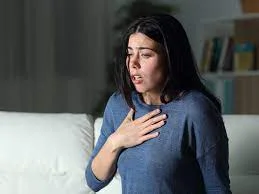
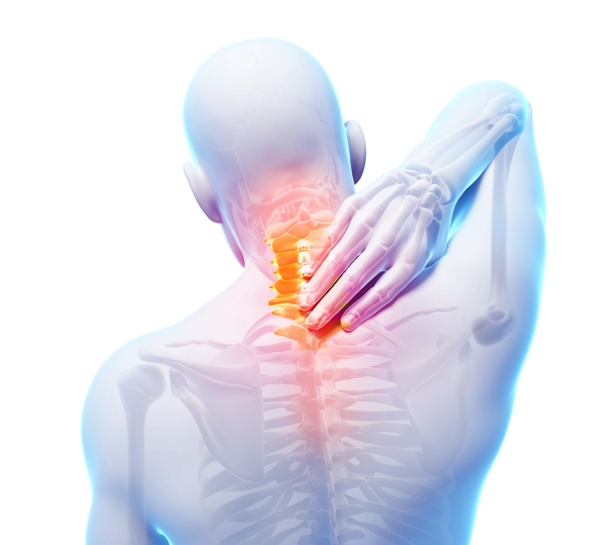
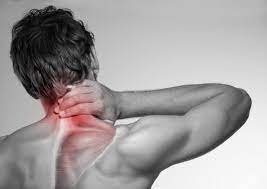
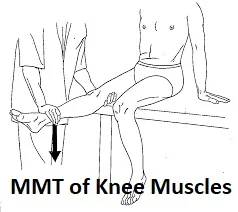
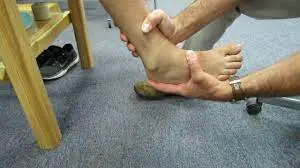
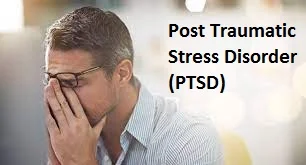
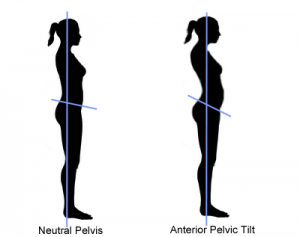
5 Comments